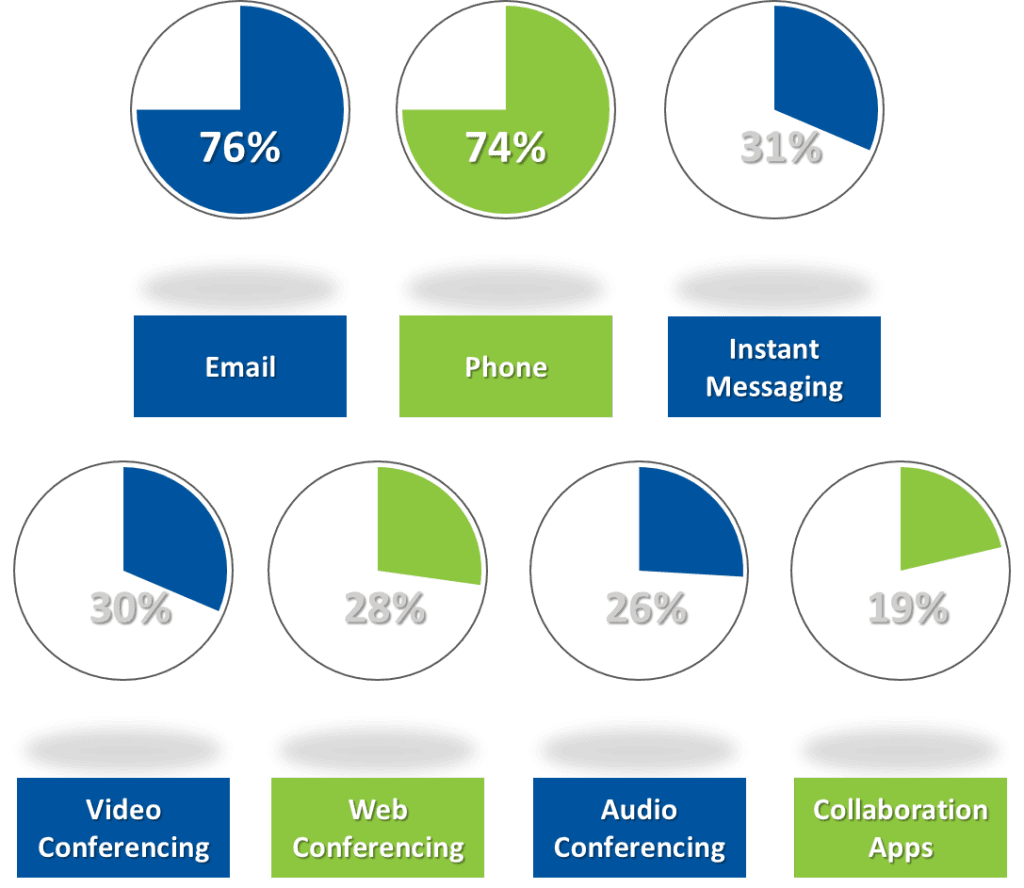The Argument for Remote Workers

Remote work is increasing in popularity, with companies adding remote workers to their teams in far greater amounts than ever before. In fact, despite many dire warnings and blogs written about how remote work has a troubled future, and that recognizable companies such as IBM and Aetna have called their employees back into the office, remote work statistics are actually showing growth over the long term. A 2017 study found that:
- “The number of people telecommuting in the U.S. increased 115 percent between 2005 and 2015.”
- “Four million U.S. employees, or 2.9 percent of the total U.S. workforce, work from home at least half of the time, up from 1.8 million in 2005.”
- “The average telecommuter is 46 years of age or older, has at least a bachelor’s degree, and earns a higher median salary than an in-office worker.”
So why is it that the remote work trend continues to grow? The reasons are plentiful and beneficial to both employees and employers. Written in the Business Case for Work Flexibility, a variety of benefits were found:
1 Increased Productivity
A study conducted at Stanford by economics professor Nicolas Bloom demonstrated that telecommuting led to a 13% increase in productivity. Bloom found that “Telecommuting workers worked more hours, took shorter breaks, and used less sick leave.” This is beneficial to both employers and employees. Employers benefit from the cost savings and profit increase of efficient employees, and employees benefit from being able to focus on their work without interruptions.
2 Improved Recruiting and Retention
A key value for remote work is that it expands the talent pool for recruiters and hiring managers. Because remote workers don’t need to live in any specific area, recruiters and hiring managers are able to search far and wide for the best candidates. Offering remote work options is an enticement for desirable candidates and once employees are hired, remote work factors into retention. In fact, Global Workplace Analytics found that “Two-thirds of people want to work from home, and 36% would choose that option over a pay raise.”
3 Better Health
A study conducted by the Sloan Center on Aging & Work at Boston College found out that working remote can benefit worker health both mentally and physically. They found that working from home can reduce work-related stress and improve overall well-being and health. They also found that employees without flexible work opportunities are more likely to have low work-family balance and are likely to have elevated cardiovascular disease risks.
4 Cost Savings
Remote work equates to cost savings in a variety of ways. Not only does increased productivity translate to increased employee savings, but there is also a huge cost savings in real estate. As found by 1 Million for Work Flexibility, “The average real estate savings with full-time telework is $10,000 per employee per year. Telework allowed IBM to cut real estate costs by $50 million, and Sun Microsystems saved $68 million a year.”
Creating a Virtual Water Cooler for Remote Employees
While providing remote work opportunities can tempt new hire candidates and help retain employees, employers must provide remote infrastructure to make their remote policy work. This infrastructure should create a means for employees to stay innovative and productive, be able to collaborate, and to create a virtual “water cooler” for them to meet around.
The virtual water cooler is in reference to the “water-cooler effect,” that is the phenomenon that employees gather in a certain environment to take breaks and chat. And, with this phenomenon, comes increased collaboration and productivity through the bonds that they create and the discussions they may have. Companies that have remote workers have to work harder to create the water-cooler effect. One of the best methods to create the water-cooler effect is to establish communication that encourages interaction.
Over the past few decades the primary means of communication for workers has been email and phone. And while both means are still communication heavy weights, a variety of new tools have entered the communications market. These communication tools have burst into popularity because they allow for real-time interaction, multi-tasking, and can be used to create the water-cooler effect. The most popular communication methods are as follows:

So how do these communication tools beat out traditional phone and email use? Let’s take a look at their many uses and how they increase innovation and collaboration.
Instant Messaging
Instant messaging is a fan favorite because it can be used for both professional and personal use. It is more efficient than email because it allows messages to appear immediately. Because instant messaging doesn’t require employees to stop work to speak with someone, it significantly reduces workplace interruptions. Instant messaging also allows workers to collaborate in real-time if an issue occurs. For example, if a worker is on the phone with a customer and runs into an issue (doesn’t know the solution to an issue, needs approval, etc.) then the worker can stay on the phone with the customer while quickly and efficiently addressing the issue with a colleague.
In regards to remote work and the water-cooler effect, instant messaging allows remote workers to feel connected no matter their location. They are able to quickly get in touch with colleagues with ideas or problems, or, they’re able to communicate recreationally (sharing stories, jokes, etc.) without interrupting current tasks.
Video, Web, and Audio Conferencing
Video, web, and audio conferencing allows for high-quality interactions between coworkers as it allows them to collaborate on and review projects from any location. By being able to see each other’s faces, share visual cues, and share documents and screens, remote employees are able to better engage and interact in meetings and projects. This increases innovation and collaboration in meetings, allowing your workers to be more productive no matter where they’re working.
In regards to remote work and the water-cooler effect, video, web, and audio conferencing allow workers to interact as if they’re in an office together. Having the opportunity to see each other face-to-face will help them build relationships, and fewer misconceptions will happen with the ability to use visual cues. In fact, studies have shown that 80% of communication is based on visual cues. Video, web, and audio conferencing (as well as instant messaging) can be used from a single Unified Communications platform, such as Vertical Communications’ iPECS Cloud solution.
Remote Worker Equilibrium
It’s important to remember that not every remote company is 100% remote, which increases the value of communications even more. As some employees prefer to telework full time, and some employees prefer to telecommute a few days a week or month, and other employees are required to be or desire to be in office full time, it’s important to provide a communications system that can serve as a foundation no matter where your employees are working. By creating a proper foundation, you can ensure that your employees are engaged and productive whenever and wherever they start their work day.
Preparing your Communications Foundation
Are you ready to get started with implementing chat, video, and web conferencing for your current or future remote workers? Do you already have these functions but want to increase your communications package to include UC? If you don’t have chat, video, web conferencing, or UC as part of your communications solution, Vertical Communications can help you determine the best provider for your needs. Vertical works with our customers to review their needs, issues, and spends, providing recommendations in all areas. This three pronged approach ensures that our customers always receive the right tool for their needs and that it is tailored to their specific business model.



